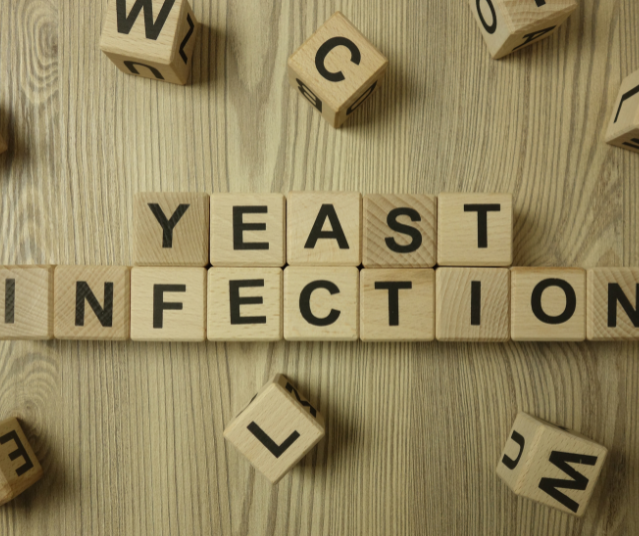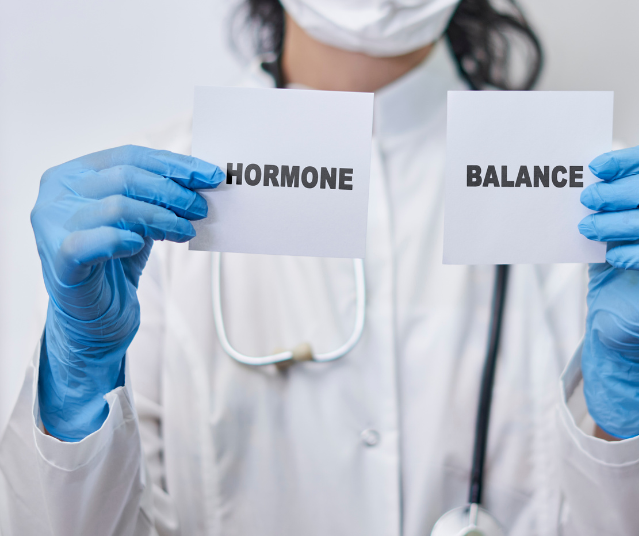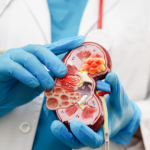Introduction
White vaginal discharge is a common occurrence for many women, often signaling a healthy reproductive system. However, when it becomes excessive, has a strong odor, or leads to discomfort, it may indicate an underlying health issue that needs attention. For many, opting for natural, home-based remedies is a preferred method of White Discharge Treatment due to their ease, affordability, and minimal side effects. In this article, we’ll explore effective home remedies for managing vaginal discharge, along with understanding its causes, prevention, and when it’s essential to see a doctor.
What is White Vaginal Discharge?
Understanding the Basics and White Discharge Treatment
Vaginal discharge is a natural and normal part of a woman’s reproductive health. It serves an essential purpose: to keep the vagina clean, moist, and free from infection. White Discharge Treatment, specifically, is a type of vaginal discharge that is common throughout a woman’s menstrual cycle. However, understanding when it is normal and when it might indicate an underlying issue is crucial for maintaining good reproductive health.
In this article, we’ll explore the basics of white vaginal discharge, its causes, and effective White Discharge Treatment options if it becomes problematic.
White Discharge Treatment refers to any discharge from the vagina that is colorless or white in appearance. It can vary in consistency, ranging from thin and watery to thick and creamy. This type of discharge is produced by glands inside the cervix and vagina to help cleanse the area, prevent infections, and maintain a healthy balance of bacteria. The amount, consistency, and appearance of white discharge may change throughout the menstrual cycle due to fluctuations in hormones.
When is White Discharge Normal?
In many cases, white discharge is completely normal. It typically occurs in response to hormonal changes, such as during ovulation, pregnancy, or puberty. Some common situations where white discharge is completely natural include:
- Ovulation: Around the middle of the menstrual cycle, women may notice a thick, white or creamy discharge due to the rise in estrogen. This helps facilitate the passage of sperm and supports conception.
- Pregnancy: Increased hormone levels during pregnancy can lead to more discharge. The discharge is often thick, white, and odorless.
- Puberty: As a young girl enters puberty, the body undergoes hormonal changes, and vaginal discharge is one of the first signs of these shifts. White discharge often appears as a result of these hormonal changes.
- Post-Menstrual Phase: After menstruation, it’s common for women to notice a slight white discharge as the vagina works to clean itself and maintain pH balance.
Causes of Abnormal White Discharge Treatment
While White Discharge Treatment can often be perfectly normal, there are instances where it may signal an underlying issue. Abnormal white discharge that is associated with unusual symptoms, such as a strong odor, itching, or discomfort, could be a sign of an infection or other health concern. Some possible causes of abnormal white discharge include:
1. Yeast Infection (Candidiasis)

A yeast infection, caused by an overgrowth of the fungus Candida, is a common cause of abnormal White Discharge Treatment. The discharge is typically thick, white, and curd-like, resembling cottage cheese. Other symptoms of a yeast infection include itching, burning, and irritation around the vaginal area.
- Treatment: Antifungal treatments, such as over-the-counter creams or prescription oral medications like fluconazole, are commonly used for treating yeast infections. In severe cases, a healthcare provider may prescribe stronger antifungal medications.
2. Bacterial Vaginosis (BV)
BV is a bacterial infection that can cause white, grayish, or yellow discharge. It often has a fishy odor and may be accompanied by vaginal irritation or burning during urination. BV is not necessarily sexually transmitted but can be caused by an imbalance of bacteria in the vagina.
- Treatment: BV is typically treated with antibiotics, either in the form of oral medication or topical creams. A healthcare provider will guide the best treatment approach.
3. Sexually Transmitted Infections (STIs)
Certain sexually transmitted infections (STIs), such as gonorrhea or chlamydia, can also lead to unusual white or cloudy discharge. In these cases, the discharge may be accompanied by pain during intercourse, pelvic discomfort, or a burning sensation while urinating.
- Treatment: STIs are treated with antibiotics or antiviral medications, depending on the specific infection. Early diagnosis and treatment are essential to prevent further complications.
4. Hormonal Imbalances
Hormonal changes, such as those caused by birth control, pregnancy, or menopause, can sometimes affect vaginal discharge. For instance, after discontinuing hormonal birth control or during the transition to menopause, the body may produce more or less discharge, and the consistency of the discharge may change.
- Treatment: Hormonal imbalances often resolve on their own, but if the discharge becomes problematic, it may require medical intervention. Hormonal therapies may be prescribed to help restore balance.
5. Foreign Objects
Occasionally, a foreign object, such as a tampon or other material left inside the vagina, can cause unusual white discharge. This can lead to irritation, infection, and a strong-smelling discharge.
- Treatment: If you suspect a foreign object, it’s essential to see a healthcare provider immediately for removal. After the object is removed, the discharge usually resolves on its own.
White Discharge Treatment Options
While white discharge is often harmless and does not require treatment, there are situations where medical intervention is necessary, especially when the discharge is abnormal or accompanied by other symptoms. Depending on the underlying cause, treatment options for White Discharge Treatment may include:
1. Home Remedies for Mild Discharge
For mild, non-infectious white discharge, some women prefer natural home remedies. These remedies can help balance the vaginal environment and reduce discomfort:
- Probiotics: Eating probiotic-rich foods like yogurt or taking probiotic supplements may help restore the natural balance of bacteria in the vagina, especially if the discharge is due to a mild imbalance.
- Apple Cider Vinegar Baths: Some women find relief by adding apple cider vinegar to their bath, as it may help maintain the vagina’s pH balance and prevent bacterial overgrowth.
- Essential Oils: Essential oils like tea tree oil have antifungal properties and can help combat yeast infections, but they should always be diluted in a carrier oil before use.
2. Over-the-Counter Treatments
If the discharge is caused by a yeast infection, over-the-counter (OTC) antifungal treatments can be effective. These include creams, suppositories, or oral tablets that can be found at most pharmacies. It’s important to follow the treatment instructions carefully and complete the full course of treatment.
3. Antibiotics for Bacterial Infections
If bacterial vaginosis (BV) or an STI is the cause of the abnormal white discharge, a healthcare provider may prescribe antibiotics to restore balance. These antibiotics can be taken orally or applied topically, depending on the severity of the condition.
4. Prescription Medications
In some cases, such as severe or recurring yeast infections, your doctor may prescribe stronger medications. For hormonal imbalances, hormone therapy or oral contraceptives might be recommended to regulate discharge.
5. Vaginal Probiotics
In cases of recurrent bacterial vaginosis or yeast infections, a healthcare provider might recommend the use of vaginal probiotics. These probiotics help restore the natural bacterial flora of the vagina and may prevent future infections.
When to See a Doctor for White Discharge Treatment
While white discharge is often a natural part of your cycle, there are situations when you should seek medical advice:
- If the discharge has a foul odor, becomes green or yellow, or is accompanied by pain, burning, or itching.
- If you experience discomfort during intercourse or urination.
- If the discharge is unusual in consistency (e.g., curd-like or frothy) and does not change over time.
- If you suspect you have a sexually transmitted infection (STI) or have been exposed to one.
When to Seek Medical Advice

Although white discharge is often harmless, certain signs indicate the need for medical attention:
- Strong, unpleasant odor
- Thick, cottage cheese-like consistency
- Accompanied by itching or burning
- Greenish or yellowish color
If you notice these symptoms, consult a doctor to rule out infections or other medical conditions.
Effective Home Remedies for White Discharge Treatment
There are several home remedies for White Discharge Treatment that can help you maintain a healthy balance. Let’s explore some effective options:
Importance of Yogurt for White Discharge Treatment
Yogurt, especially when rich in probiotics, is a fantastic natural remedy for restoring vaginal flora. Probiotics help balance bacteria in the vagina, reducing the risk of infections and excessive discharge. Consuming a cup of yogurt daily or applying it topically can promote healthier vaginal discharge.
Benefits of Fenugreek Seeds
Fenugreek seeds are renowned for their ability to balance hormones and enhance immune function. To use fenugreek for White Discharge Treatment, soak a tablespoon of seeds in water overnight. Drink the water on an empty stomach the next morning to potentially regulate discharge and improve vaginal health.
Garlic’s Role in White Discharge Treatment
Garlic has potent antifungal and antibacterial properties, making it highly effective in combating infections that cause abnormal discharge. Including raw garlic in your diet, or consuming garlic supplements, can help control vaginal discharge issues naturally.
The Power of Indian Gooseberry (Amla)
Amla, or Indian Gooseberry, is packed with vitamin C and antioxidants, both of which boost immunity and improve vaginal health. Drinking amla juice daily or using it in powder form with water can help reduce abnormal discharge over time.
Personal Hygiene Tips
Proper hygiene is essential in managing White Discharge Treatment and preventing infections. Here are some practical hygiene practices:
- Wear Cotton Underwear: Cotton allows the skin to breathe, reducing moisture and bacteria buildup.
- Avoid Douching: Douching can disrupt the natural balance of bacteria in the vagina.
- Regular Washing: Use warm water and a gentle, unscented soap to wash the genital area daily.
- Change Sanitary Pads Frequently: During menstruation, change pads every four to six hours.
Avoiding Triggers for White Discharge Treatment
Several lifestyle factors and habits can exacerbate White Discharge Treatment. Here are some common triggers to avoid:
- Tight Clothing: Tight pants and synthetic materials can create a moist environment conducive to bacterial growth.
- Excessive Sugars: High sugar intake can lead to yeast overgrowth.
- Smoking: Smoking negatively affects overall health, including vaginal health.
- Stress: High stress levels can disrupt hormonal balance, leading to changes in vaginal discharge.
Natural Supplements for Vaginal Health
Certain supplements can support vaginal health, aiding in the prevention and treatment of white discharge:
- Vitamin C: Boosts immune function, potentially reducing the risk of infections.
- Probiotics: Available as supplements to help maintain a healthy bacterial balance in the vagina.
- Zinc: Known for its immunity-boosting properties, zinc can help prevent infections.
Lifestyle Changes for Prevention
Implementing a few lifestyle changes can go a long way in preventing excessive vagina discharge. These changes are simple yet effective for maintaining overall health:
- Regular Exercise: Physical activity improves blood circulation, which can promote hormonal balance.
- Balanced Diet: Eating a variety of nutrient-rich foods supports immune function and prevents infections.
- Adequate Sleep: Rest is essential for hormone regulation and immune health.
Foods to Avoid for Better Vaginal Health
Diet plays a significant role in vaginal health, and certain foods can aggravate discharge problems. Avoiding these foods may help in white discharge treatment:
- Sugary Foods: Sugar encourages yeast growth.
- Processed Foods: These are often high in unhealthy fats and lack essential nutrients.
- Dairy Products: While yogurt is beneficial, other dairy products may increase mucus production.
Benefits of Water for Vaginal Discharge
Staying hydrated is crucial for all bodily functions, including vaginal health. Water helps flush out toxins from the body and maintains the moisture balance in vaginal tissues, reducing the likelihood of discharge abnormalities.
FAQs on White Discharge Treatment
Q1: Can white discharge be a sign of an infection?
Yes, excessive or abnormal white discharge, particularly if it has an odor or causes discomfort, can be a sign of infections like bacterial vaginosis or yeast infections.
Q2: Are there any quick remedies for reducing white discharge?
Yes, consuming yogurt or garlic, and drinking fenugreek water can be quick, natural ways to manage white discharge.
Q3: How often should I see a doctor for vaginal discharge?
If you experience abnormal discharge with strong odor, itching, or a change in color, it’s best to consult a doctor. Regular checkups can also help prevent potential issues.
Q4: Can stress really affect vaginal discharge?
Absolutely! Stress can disrupt hormone levels, which may lead to changes in the amount and consistency of vaginal discharge.
Q5: Is it safe to use natural remedies for white discharge treatment?
Yes, many natural remedies are safe. However, if symptoms persist or worsen, consulting a healthcare provider is advisable.
Understanding the Impact of Diet on Vaginal Health
Your diet directly affects many aspects of your health, including your reproductive health. Certain foods can support vaginal health by maintaining the right pH balance and fostering a beneficial environment for healthy bacteria. Foods rich in vitamins, antioxidants, and fiber—like leafy greens, fruits, and whole grains—are particularly beneficial. Consuming fermented foods such as yogurt, kimchi, and kefir can boost probiotics, which help maintain a healthy balance of bacteria in the vagina. Including these foods in your diet is an excellent way to support your body’s natural defenses against issues like excessive White Discharge Treatment.
Hydration and Vaginal Health: The Connection
Staying adequately hydrated plays a vital role in maintaining vaginal health. Water helps flush toxins out of the body, reducing the risk of infections that may lead to increased White Discharge Treatment. Dehydration, on the other hand, can impact the body’s natural functions, potentially leading to dryness, discomfort, and other issues. Aim to drink at least eight glasses of water daily, and consider incorporating other hydrating fluids, like herbal teas, to help maintain a balanced moisture level in your body and prevent excessive discharge.
Practicing Self-Care for Hormonal Balance

Self-care isn’t just about relaxation; it also supports hormonal balance, which is crucial for reducing abnormal White Discharge Treatment. High levels of stress can lead to a surge in cortisol, a hormone that can disrupt the body’s balance and affect reproductive health. Incorporate relaxation techniques such as meditation, yoga, or even a walk in nature to help reduce stress levels. Regular physical activity, adequate sleep, and mindful breathing exercises can have a tremendous impact on balancing your hormones, thus helping regulate vaginal discharge naturally.
The Role of a Consistent Health Routine
Consistency is key when it comes to maintaining good vaginal health. Adopting small, sustainable habits like eating a nutrient-dense diet, staying hydrated, and practicing proper hygiene can make a substantial difference in preventing unwanted symptoms. Avoid harsh soaps, limit processed foods, and keep stress levels in check as part of your health routine. Even if symptoms of excessive White Discharge Treatment subside, continuing these habits can support ongoing vaginal health and prevent future issues. Regular health practices create a stable foundation, ensuring your body remains balanced and equipped to handle natural fluctuations effectively.
Know More : PCOD Treatment
Conclusion
White vaginal discharge is a natural occurrence that helps in maintaining a healthy reproductive system. However, when it becomes troublesome, these effective White Discharge Treatment remedies can provide relief. By following proper hygiene, maintaining a balanced diet, and incorporating specific natural treatments, you can ensure better vaginal health. Remember, though, that persistent symptoms warrant a professional medical opinion to rule out underlying conditions.











